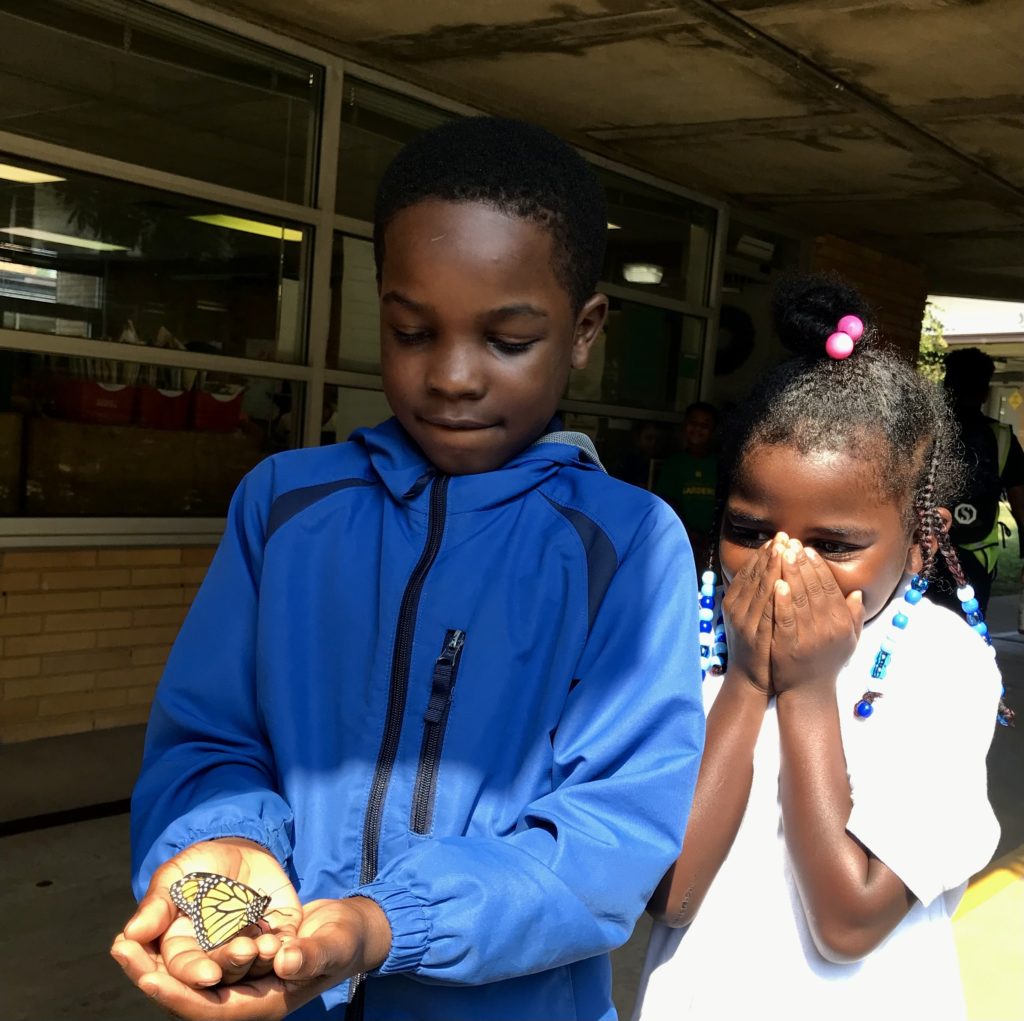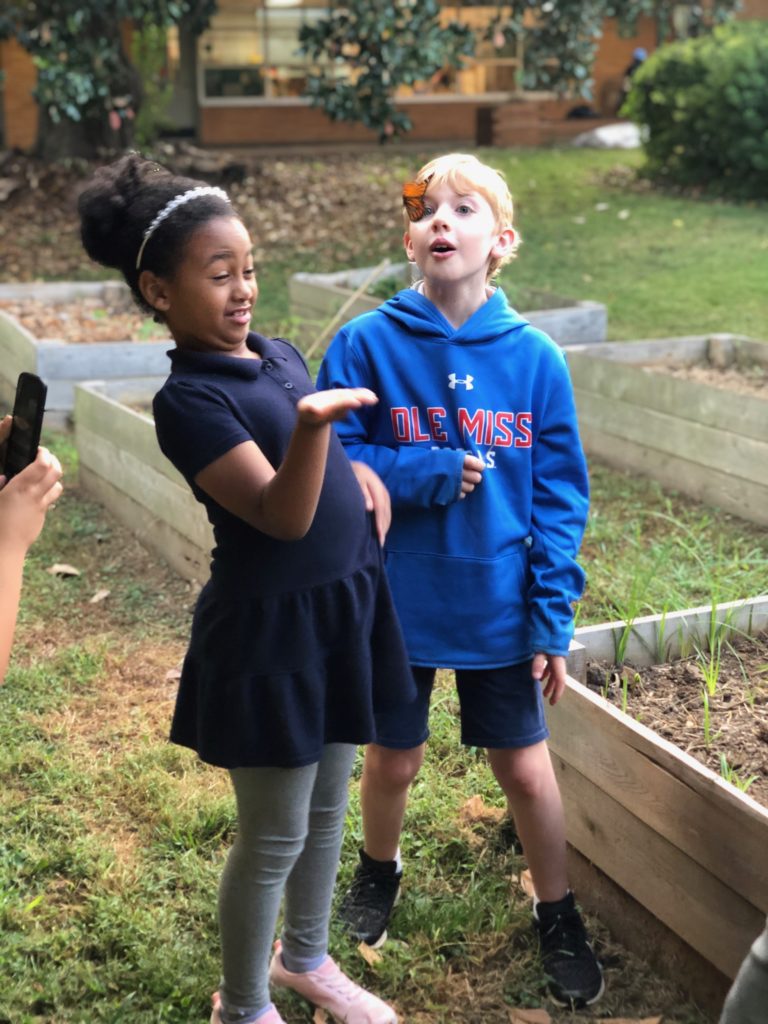Tagging and releasing Monarch butterflies has always been one of my favorite school-based activities.
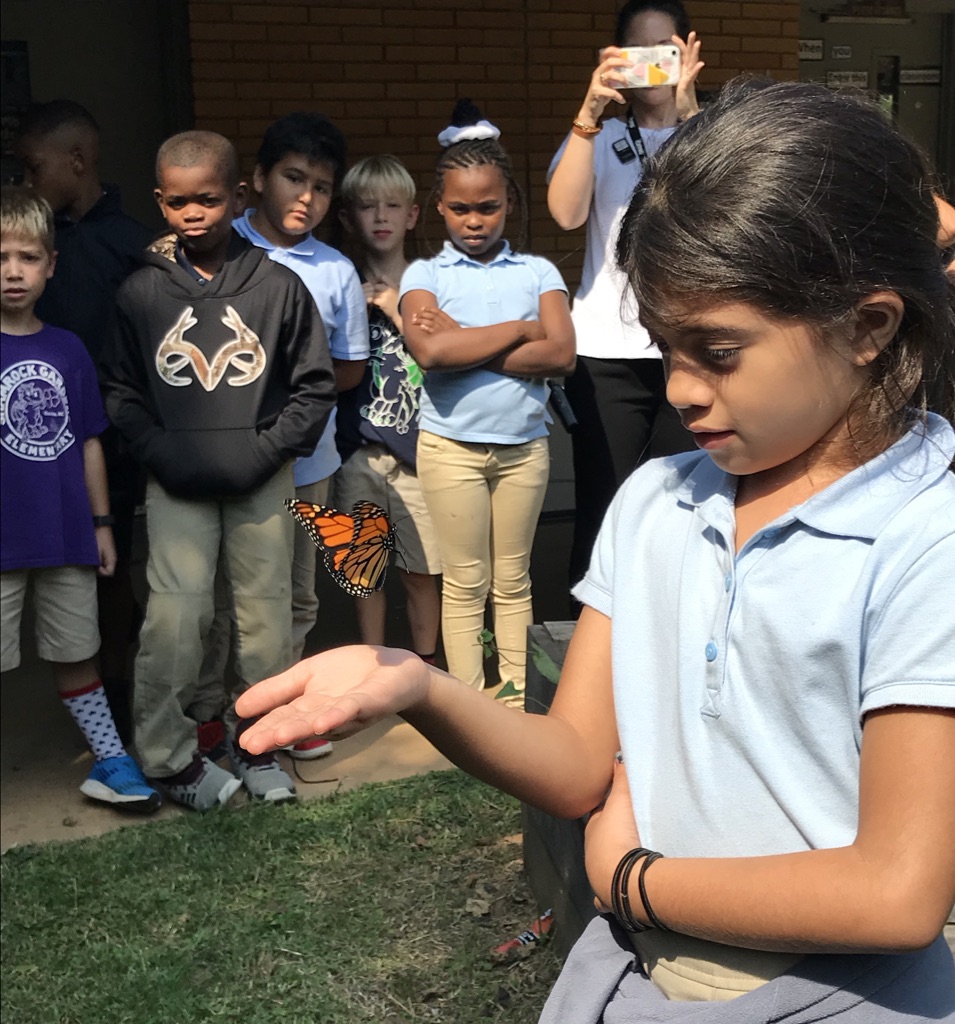
This tagging has a fascinating history.
Until a few decades ago, no one imagined that butterflies could make the 2,000-mile journey from Canada or the U.S. to Mexico.
For countless generations, residents of central Mexico knew that starting in late October, massive numbers of bright orange butterflies would stream into the area. They had no idea where the butterflies came from. They incorporated their arrival into their Day of the Dead ceremonies, which families across Mexico celebrate on November 1 and 2 to honor their ancestors.
By the late nineteenth century, Canadian and U.S. scientists knew that the Monarchs they observed disappeared in fall and reappeared in spring, but they didn’t know what happened in the intervening months. Then, starting in the 1950s, a pair of Canadian scientists named Fred and Nora Urquhart devised a system to mark Monarchs with small numbered tags. They recruited a corps of volunteer citizen scientists to tag Monarchs, and monitored the butterflies’ movements across the continent. In the fall of 1975, the first tagged Monarchs were found in Mexico. The mystery was solved.

The group Monarch Watch has been tagging Monarchs since 1992. The tagging provides valuable information about the rhythm, timing and scope of monarch migration. At Shamrock, we ordered tagging kits from them, which included the tags and a record sheet for us to fill out and return.
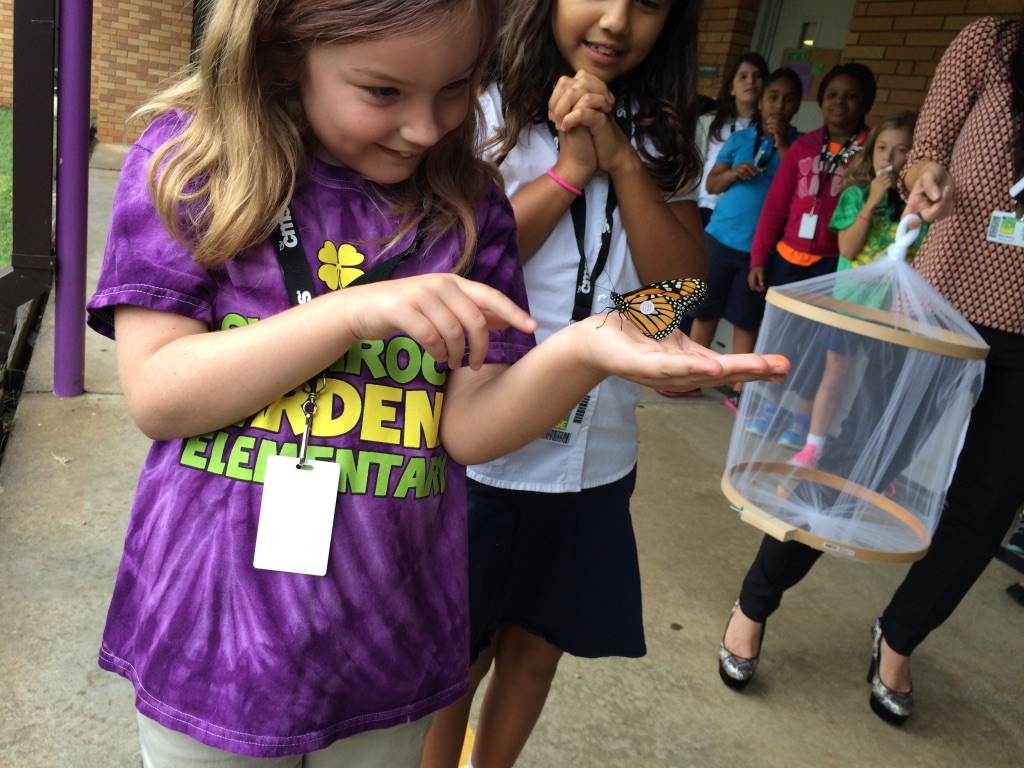
The tagging process is a magical experience. This is the only time I let students touch butterflies. When any other butterfly emerges from its chrysalis, we just open the cage and let it fly away. But because tagging serves a scientific purpose, I make an exception here.
Over time, I’ve developed a procedure that lets a lot of students participate.
When Monarchs emerge in a classroom, I have the teacher designate four student helpers for each butterfly.
I give my phone to the first helper to document the experience. Some get amazing shots – most of the pictures on this page were taken with my phone by third and fourth graders.
The second helper records the tag number on our record sheet.
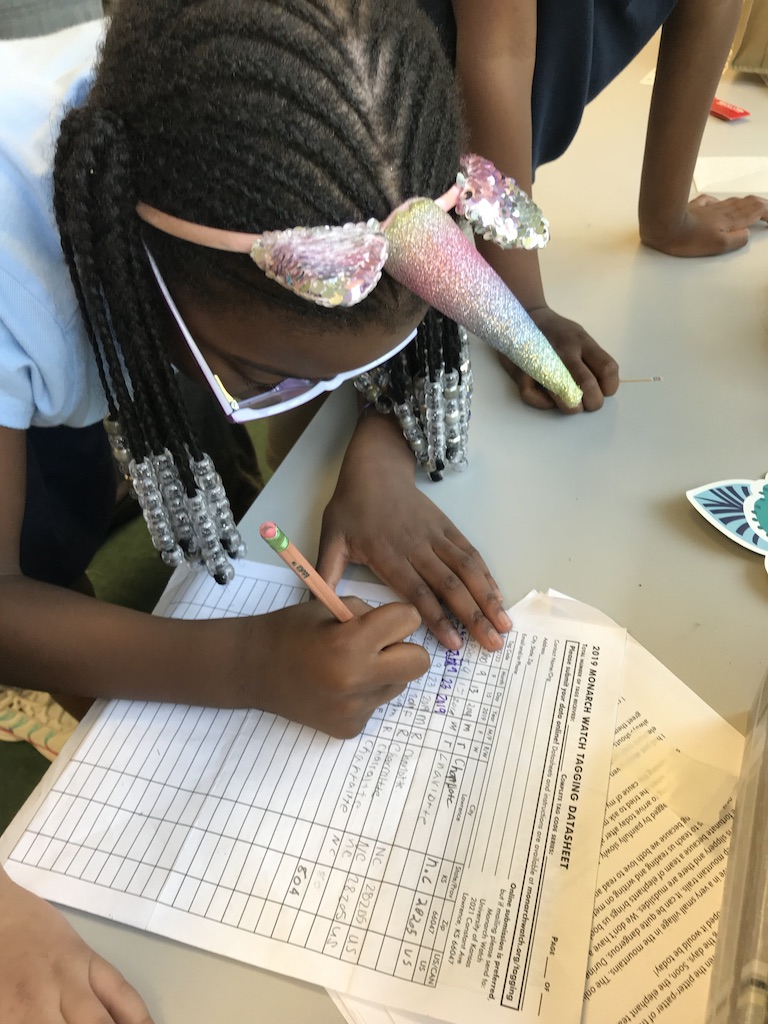
I gently grasp the butterfly by its wings, and the third helper helps me put the tag in place.
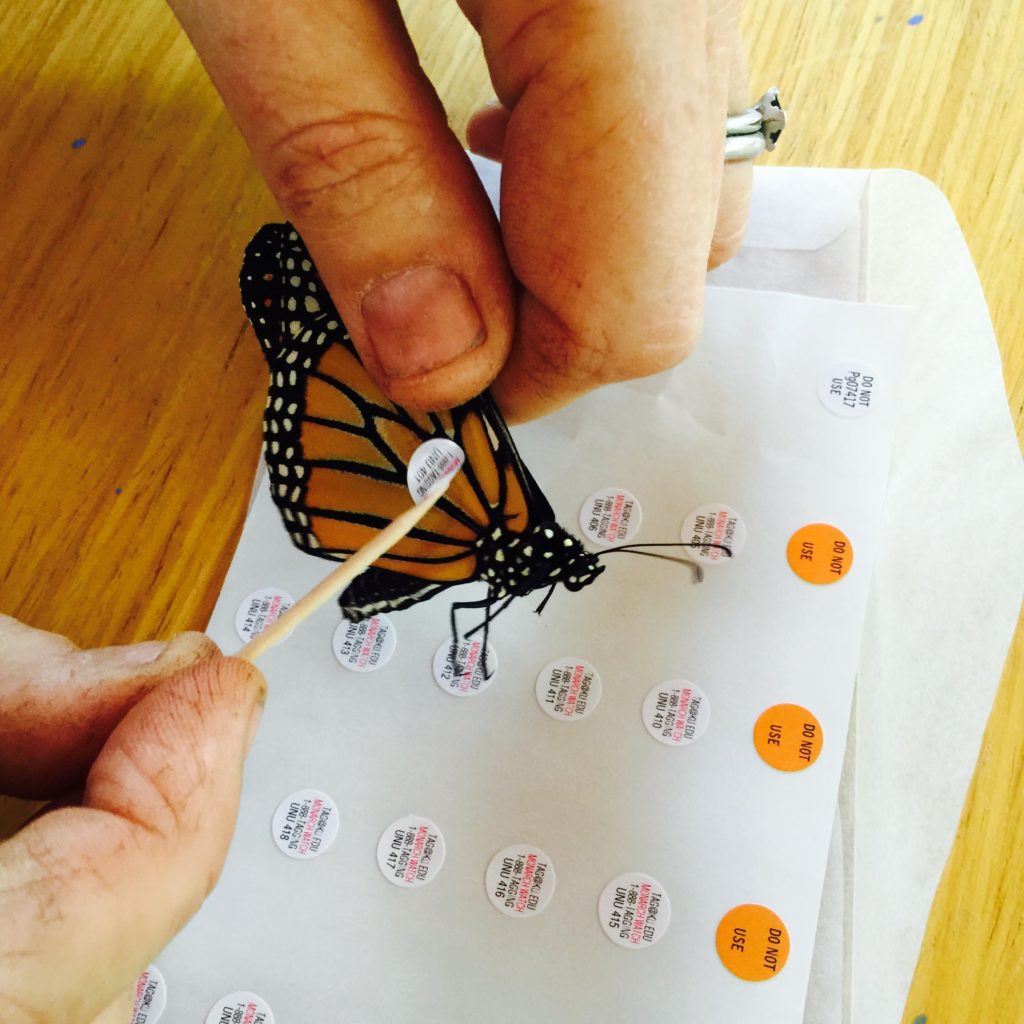
Then the whole class goes outside. I briefly touch each of the first three helpers’ hands with the butterfly’s feet, so they can feel the tickle.
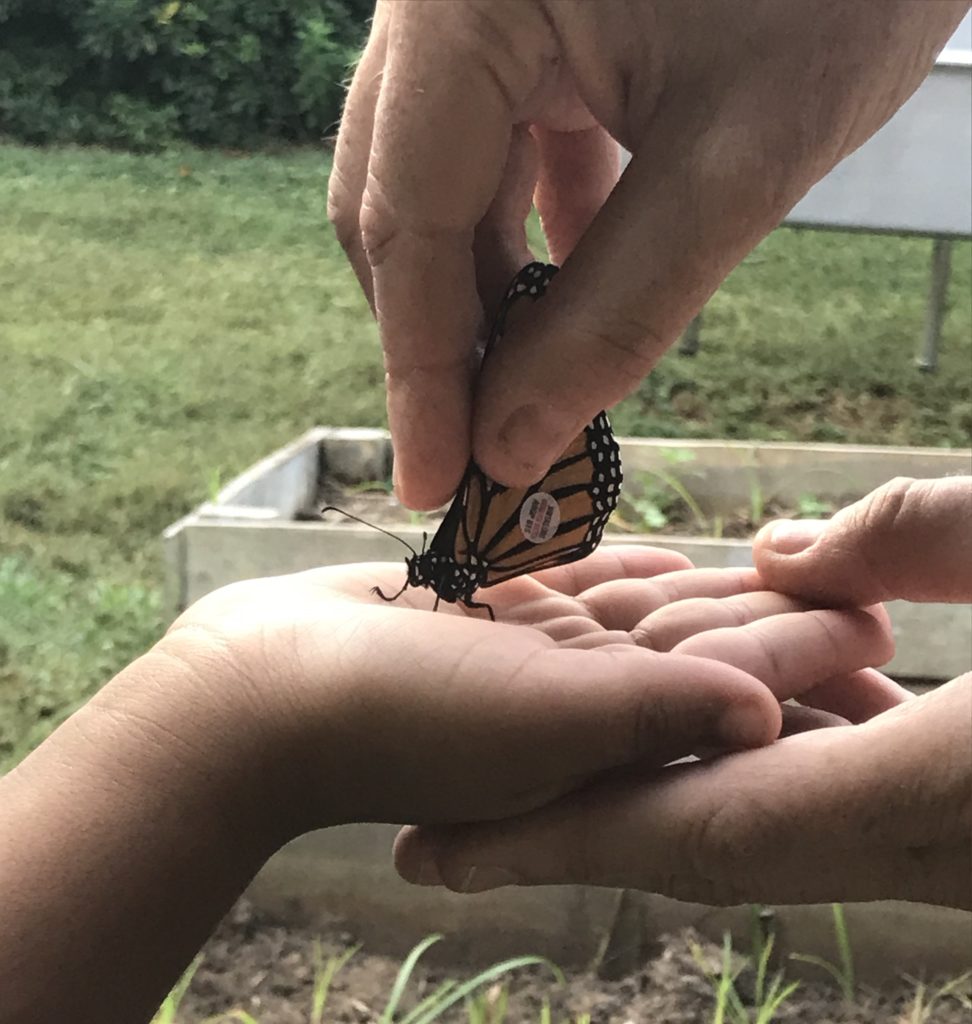
Then I place it on the hand of the fourth helper. We all wait for it to fly away. Unforgettable.

